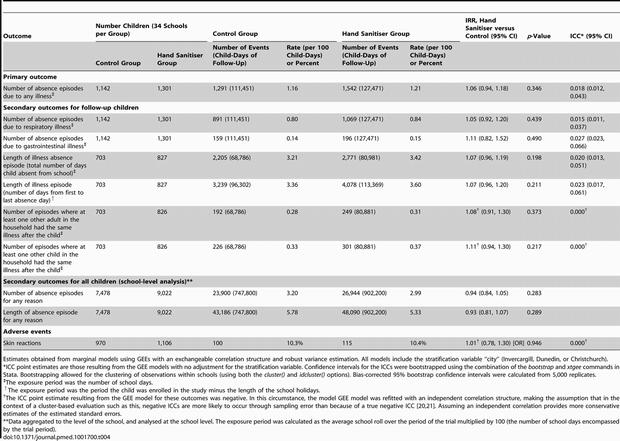Installing hand sanitizers in classrooms has not led to reductions in the rate of school absences in children, according to results of a cluster randomized trial that that randomly assigned 68 city primary schools in New Zealand to the intervention or control group and measured the rate of school absence in children attending the participating schools.
All children received a 30-minute in-class hand hygiene education session. In those schools randomly assigned to the intervention group, alcohol-based hand sanitizer dispensers were installed in the classrooms over two winter terms and the children were asked to use the dispensers after coughing or sneezing and on the way out of the classroom for morning break or lunch.
In the 2,443 children whose caregivers agreed to be telephoned about the reason for absence, the researchers report that the rate of school absences due to any illness was similar in the intervention and control schools. Moreover, among these children, the provision of a hand sanitizer did not reduce the number of absences due to a specific illness (respiratory or gastrointestinal), the length of illness and length of absence from school, or the number of episodes in which at least one other family member became ill.

CLICK IMAGE FOR LARGER SIZE. Estimates of effectiveness of hand sanitizer on outcome measures. Credit:
doi:10.1371/journal.pmed.1001700
When using school attendance records from all children in the participating schools, the number of absences for any reason and length of absence episode did not differ between the intervention and control schools.
While these findings suggest that providing hand sanitizer in classrooms may not be an effective way to reduce child-to-child transmission of infectious diseases in high income countries, there are some limitations to the study.
For example, the trial was undertaken during an influenza epidemic, therefore influenza-related public-health messages about good hand hygiene may have increased hand hygiene among all the children in the study and obscured any effectiveness of the intervention. Furthermore, the generalizability of the findings to other high income countries is unclear.
The authors say: "The provision of hand sanitizers in addition to usual hand hygiene in primary schools in New Zealand did not prevent disease of severity sufficient to cause school absence."


